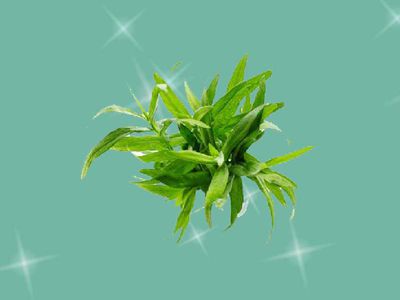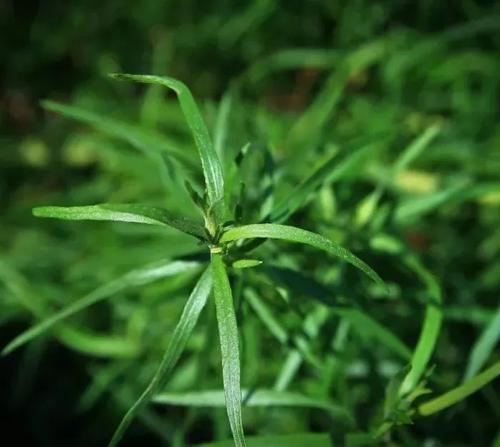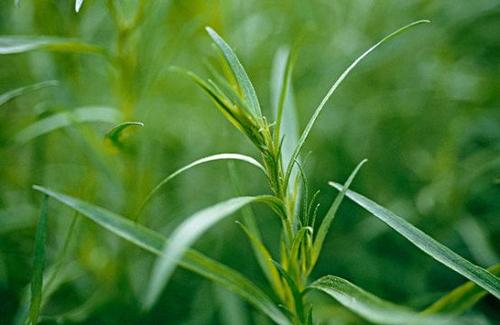Saffron Crocus (Artemisia dracunculus) profile
Written by Maggie
May 13 2021

Saffron Crocus (Artemisia dracunculus) is a plant in the composite family.Perennial herb, has a certain edible value.
Saffron Crocus picture

Saffron Crocus info
| Botanical Name | Artemisia dracunculus (Sativa subspecies) |
| Common Name | Saffron Crocus |
| Plant Type | Perennial herb |
| Mature Size | 24 inches |
| Sun | Part Sun/Part Shade |
| Flower Color | Light green leaves |
| Hardiness Zones | 4 and above |
| Native Area | Temperate Europe and Asia |
Morphological characteristics of Saffron Crocus
Saffron Crocus is a semi-shrubby herb. Roots stout or slightly fine, woody, vertical;Rhizome thick, woody, erect or oblique, 0.5 -- 2 cm in diameter, often with a short underground stem. Stems are usually numerous, tufted, 40-150(-200) cm tall, brown or green, longitudinally ribbed, lower woody, slightly curved, branched many, spreading, obliquely upward; Stems, branches are slightly pubescent at first, and gradually fall off after.Leaves sessile, slightly pubescent on both surfaces at first, glabrous or subglabrous on both posterior surfaces, lower leaves withering at flowering stage;Middle leaves linear-lanceolate or linear-lanceolate, (1.5-) 3-7 (-10) cm long, 2-3 mm wide, apex acuminate, base attenuate, entire;Upper leaves and bracts. Leaves slightly short, linear or linear-lanceolate, 0.5-3 cm long, 1-2 mm wide.Inflorescences numerous, subglobose, ovoid, or subhespherose, 2-2.5 mm in diam., shortly or subsessile, obliquely spreading or slightly pendulous, linear bracteoles at base, complex racemes arranged on the branches of the stem, and panicles open or slightly narrow on the stem; Involucracts 3-ply, outer involucracts slightly narrow, ovate, abaxially green, glabrous, middle and inner involucracts ovoid or long ovate, margin broadly membranous or all membranous inflorescences small, raised;Female flowers 6-10, corolla narrowly tubular or slightly narrowly conical, corolla with 2(-3) lobed teeth, styles protruding outside the corolla, apex 2-forked, apex pointed;Bisexual flowers 8-14, unpregnant, corolla tubular, anthers linear, apex appendages acute, long triangular, base obtuse, style short, apex clavate, 2-lobed, not divided, vestigial ovary small.Achene obovate or ellipsoid obovate.
Saffron Crocus origin and habit
Saffron Crocus is produced in Heilongjiang, Jilin, Liaoning, Inner Mongolia, Hebei (N), Shanxi (N), Shaanxi (N), Ningxia, Gansu, Qinghai and Xinjiang.Northeastern China, North China and Xinjiang are distributed at an altitude of 500-2 500 meters. Gansu and Qinghai are distributed at an altitude of 2-3 800 meters. They are mostly found on dry slopes, grasslands, semi-desert steppes, forest steppes, forest margins, fields, roadsides, dry river valleys, riverbank terrains, subalpine meadows and other areas, as well as near saline-alkali flats. The local area becomes the main companion species of the plant community.It is widely distributed in the northern temperate zone and subtropical semi-desert and grassland areas.Mongolia, Afghanistan, India (N), Pakistan (N), Kashmir, Sikkim, the Soviet Union, Eastern, Central and Western Europe and North America. The type specimens were collected from Siberia, USSR.
How to grow and care for Saffron Crocus
Light
The Saffron Crocus prefers a full solar or very mild color location. Without at least 4 to six hours of direct solar throughout bloom time, you run the danger of being disillusioned with the crop.Soil
This plant isn't always fairly choosy about soil type. It does want to be well-draining though, and fine consequences are viewed in a loamy, humus-rich type.Water
The Sativus crocus range goes dormant in the summer. You should not water them during this period.As you would count on from a plant that is commonly grown in arid regions, they do not want a lot of watering in general. Once established, they're tremendously drought-tolerant and too a whole lot moisture can harm or rot the bulbs.
If you have a in particular dry spell, mild watering will be required, but, different than this, they may cope will with simply herbal rainfall.
Temperature and humidity
Saffron Crocus thrive in a continental local weather the place there is a particular distinction in the seasons. They do exceptional when summers are warm and dry. Too lots humidity is a massive trouble for this plant.If they're challenge to very harsh, freezing iciness conditions, the bulbs may not develop as well, and this should end result in negative flowering. Mulching round the flowers with straw or compost can assist to shield them if you anticipate the temperatures to drop significantly.
Fertilizer
Incorporating an natural fertilizer into the soil when you are planting Saffron Crocus bulbs can be advantageous.After they're established, you ought to deal with them yearly with fertilizer, but, with the proper conditions, they possibly might not require any to be added.

Propagating Saffron Crocus
A sterile plant that cannot reproduce by way of seeds, it propagates thru the multiplication of its bulbs (called corms). This ability extra corms will naturally boost beneath the soil.It's a exact concept to dig up the bulbs and separate the ancient corms from the new one each few years. Replanting after this will inspire healthful increase by means of stopping overcrowding and making sure that the bulbs stay deep ample in the soil.
Any replanting can be performed in the summer time at some stage in the dormancy period.
Growing Saffron Crocus in Containers
Crocus bulbs are effortless to develop in containers. It can really be reachable if you journey specifically harsh winters. It permits you to pass the containers to a hotter vicinity when the frosts hit.Plant the bulbs in the pot in the fall, earlier than any frosts arrive. The pot must be fairly deep and spacious. You prefer the bulbs to take a seat at least three inches apart. There must be at least 5 inches of soil on the base and a in addition three inches over the pinnacle of the bulbs.
The pot can be buried into the floor at this point, however have to continually be lifted out to be saved indoors earlier than the freezing temperatures arrive.
Once indoors, no watering will be required for the duration of this dormancy period.
Saffron Crocus uses
Saffron Crocus contains volatile oils, mainly aldehydes, and a small amount of alkaloids.Qinghai folk medicine to treat heat, humidity, fever, fatigue and so on. The root has a spicy flavor. Xinjiang folk take the root ground to replace the pepper as seasoning.Pasture areas for livestock fodder.

Latest Updated
- Benefits of Bugleweed - 7 Science-backed Health Benefits
- Bugleweed Dangers & Side Effects - Is It Poisonous?
- How to Plant Evergreen Trees - What You Should Know
- When to Plant Evergreens - Grow Guide for Evergreen Trees
- 12 Wonderful Evergreen Shrubs for Your Garden
- 12 Popular Evergreen Plants with Pictures for Beginners
- When And How To Prune A Lilac Bush Like a Pro
- How to Grow & Care for Lilac Vine (Hardenbergia Violacea)
- Japanese Lilac Tree (Syringa Reticulata) Care & Propagation Guide
- Shumard Oak Pros and Cons - What to Know
Popular Articles
- Winter maintenance of Antirrhinum Majus
- How to Grow Terminalia Mantaly Tree
- How to Grow and Care for Crossostephium Chinense
- How to grow Antirrhinum Majus in spring
- Peristeria Elata (Dove Orchid) Profile: Info & Care Guide
- Underwatered Snake Plant (Sansevieria Trifasciata) - Signs And How To Fix
- How to Care for Brazilian Jasmine Plant (Mandevilla Sanderi)
- How to Grow & Care for Graptopetalum Purple Delight in Summer
- Rosa Chinensis (China Rose): Plant Growing & Care Tips
- How to Care for Baby Sun Rose (Aptenia Cordifolia)